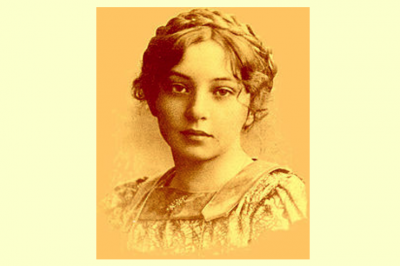

When The Wreath first appeared in English, the New York Times hailed it as “strong and dramatic . . . In the more than seventy-five years since it was first published, it has also become a favorite throughout the world. Kristin Lavransdatter became a touchstone for Undset’s contemporaries, and continues to be widely read by Norwegians today. Granted independence in 1905 after five hundred years of foreign domination, Norway was eager to reclaim its national history and culture. Winsnes notes in his biography, Sigrid Undset: A Study in Christian Realism, has led many scholars to call her “The Zola of Middle Ages.” Undset’s ability to present a meticulously accurate historical portrait without sacrificing the poetry and narrative drive of masterful storytelling was particularly significant in her homeland. Her realistic, unvarnished approach, as A. In depicting her country’s vanished culture, Undset, like others in the Modernist era, rejected the romantic view of the past prevalent in mid-nineteenth century literature, music, and art-from Tennyson’s fanciful retelling of the Arthurian legends, Idylls of the King to Wagner’s musical interpretations of Germanic myths to the dreamy paintings of the Pre-Raphaelite artists. In addition, she restores key passages left out of that edition, including a sexually explicit love scene and several conversations among the characters that offer crucial insights into their feelings and motivation.


Nunnally, an award-winning translator, retains the natural dialog and lyrical flow of the original Norwegian, with its echoes of Old Norse legends, while deftly avoiding the stilted language and false archaisms of Archer’s translation.

Her grasp of the connections between past and present and of human nature itself, combined with the extraordinary quality of her writing, sets her works far above the genre of “historical novels.” This new translation by Tiina Nunnally-the first English version since Charles Archer’s translation in the 1920s-captures Undset’s strengths as a stylist. Undset’s own life-her familiarity with Norse sagas and folklore and with a wide range of medieval literature, her experiences as a daughter, wife, and mother, and her deep religious faith-profoundly influenced her writing. The trilogy, however, is more than a journey into the past. In Kristin Lavransdatter (1920–1922), Sigrid Undset interweaves political, social, and religious history with the daily aspects of family life to create a colorful, richly detailed tapestry of Norway during the fourteenth-century. A PENGUIN CLASSICS READERS GUIDE TO KRISTIN LAVRANSDATTER


 0 kommentar(er)
0 kommentar(er)
